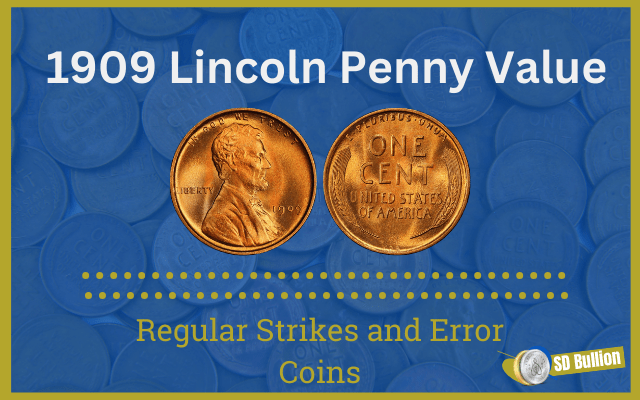Jump to: History of the Lincoln Cent | Design and Features | Grading and Condition | Regular Strikes | Rare 1909 Penny Error List
Also known as the "Lincoln Penny" or "Wheat Penny," few pieces have sparked as much fascination in coin collecting as the 1909 VDB Lincoln Cent. First issued in 1909 to celebrate the 100th birthday of Abraham Lincoln, these coins, commissioned by President Theodore Roosevelt, can be worth up to $250,000 if in the right condition.
In this article, we will dive into one of the most famous American coins in the numismatic world. You will learn why this variety came into existence and the record prices and variables affecting its value in the current market, including relevant errors.
Key Takeaways
- The 1909 VDB Lincoln Cent, designed by Victor David Brenner, was created to honor Abraham Lincoln’s 100th birthday;
- Initial backlash led to the removal of Brenner's initials (VDB) from the coin shortly after production began;
- The coin's value is influenced by its condition, rarity, and errors like the double-die obverse variety;
- Grading on the Sheldon scale and color designations (Red, Red-Brown, Brown) play a key role in determining the coin’s worth;
- Rare versions, especially from the San Francisco Mint (S VDB), have fetched record prices at auctions, reaching up to $168,000.
History of the Lincoln Cent
President Theodore Roosevelt, impressed by Brenner's talent, selected him in 1908 to design a medal for the Panama Canal.
Following the death of renowned coin's designer Augustus Saint-Gaudens in 1907, the U.S. Mint sought new designers to be part of the minting process.
Roosevelt wanted a coin to honor Abraham Lincoln's 100th birth anniversary (1809-1909) and ultimately accepted to feature Lincoln's image on the coin.
So, Sculptor Victor David Brenner's initials, VDB, were initially placed on the reverse. However, this caused heavy criticism. Some saw the initials as unnecessary advertisement, while others said the letters were too prominent and that few knew what the possibly cabalistic notation meant.
The mint decided, in response, to remove these VDB initials. It was a matter of days, but it is estimated that 27,995,000 1909 "VDB" Lincoln cents were already struck before the initials were removed. Interestingly, the initials were restored in 1918.
Design and Features of the 1909 VDB Penny
Now, let us dive into the details of the coin's design.
The Obverse of the 1909 VDB Penny
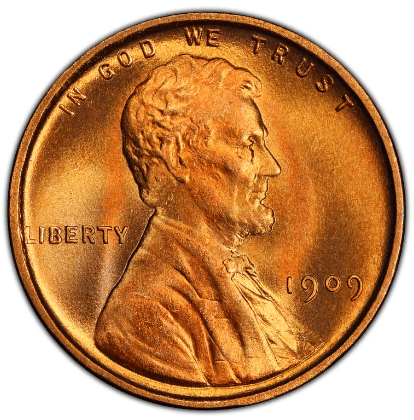
As mentioned before, the obverse of the 1909 Lincoln Cent features a right-facing portrait of Abraham Lincoln designed by Victor David Brenner.
The design includes the inscription "LIBERTY" to the left of Lincoln's portrait and the date "1909" to the right. Notice that Philadelphia pennies do not have mint marks.
Above Lincoln's head, the motto "IN GOD WE TRUST" is inscribed in a curved line following the coin's edge.
This coin marked a significant moment in U.S. numismatic history as it was the first regular-issue coin to depict a real person.
The Coin’s Reverse
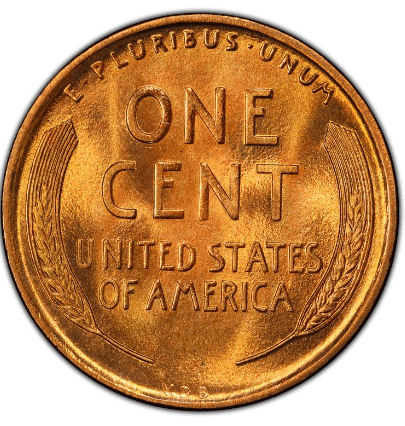
The coin's reverse side of the 1909 Lincoln Cent, also designed by Victor David Brenner, features two prominent wheat ears on either side, which gives the coin its nickname, "Wheat Penny."
In the center, the denomination "ONE CENT" is prominently displayed, with "UNITED STATES OF AMERICA" directly below it. At the top, the Latin motto "E PLURIBUS UNUM" is inscribed, meaning "One, out of many".
The design is simple yet elegant, symbolizing the nation's agricultural heritage.
According to PCGS, many people hoarded the coins with Brenner's initials. There are probably 30,000 to 40,000 Mint State survivors and maybe as many as 20,000 full Red Gems, which can be worth hundreds and thousands of dollars in extra-fine conditions.
Read more about Wheat Pennies and their values.
Grading and Condition of the 1909 VDB Penny
Keep reading to uncover the importance of coin grading in determining a coin's value.
Coin Grading
Coin grading is assessing a coin's condition and assigning it a grade based on a numerical scale. The Professional Coin Grading Service (PCGS) is a leading authority in coin grading and uses the Sheldon Scale, developed by Dr. William Sheldon in 1948.
This scale ranges from 1 to 70, where 1 represents a heavily worn and damaged coin, and 70 signifies a coin in perfect mint condition.

Collectors and dealers rely on graded coins to accurately represent their condition. A higher grade generally means a higher market value due to the coin's rarity and desirability among collectors.
Grading provides a standardized way to communicate a coin's condition, facilitating fair transactions and ensuring market transparency.
Even in average circulated conditions, if genuine, a coin retains its face value of approximately 1 cent.
Still, graded coins, even in lower grades or with low rarity, are often more liquid and more accessible to trade because their condition is certified by reputable grading services like PCGS or NGC, and they are encapsulated in protective slabs.
Now that you understand the importance of condition, it is crucial to note that besides grading, color plays a significant role as it indicates the level of preservation and significantly affects the prices of copper coins.
Color Designations
Copper coins are characterized by their hues as Red, Red-Brown, and Brown. Professional numismatists established these classifications based on how the coins' composition reacts to varying degrees of environmental exposure, which begins oxidizing as soon as it is exposed to air.
RED (RD):
A 1909 penny is primarily made of copper and displays a red hue when newly minted. PCGS classifies copper coins as "Red" when they retain 95% or more of their original color.
This reddish hue indicates that the coin has not been in circulation or is heavily exposed to air, reflecting a higher market value due to its excellent condition.
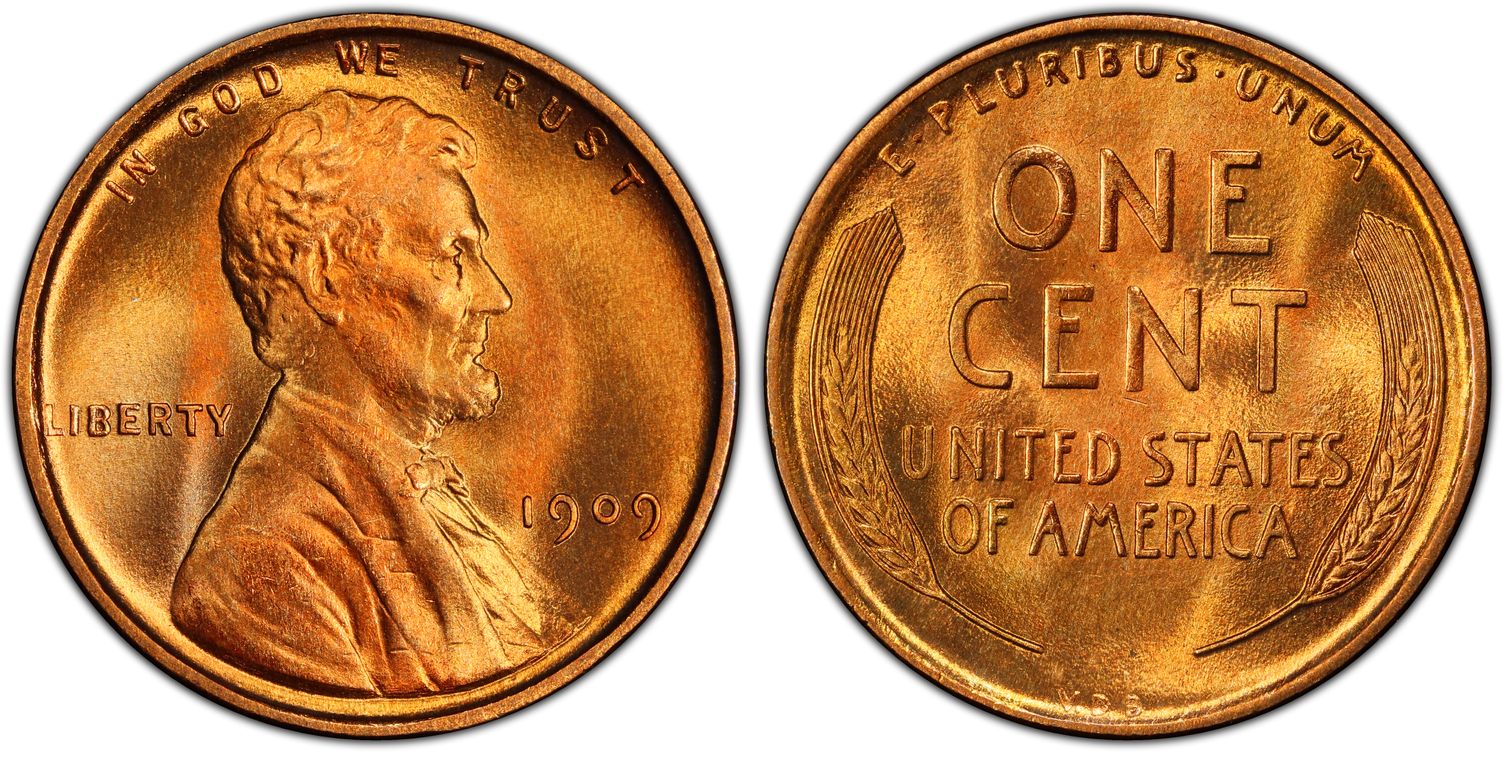
RED-BROWN (RB):
PCGS categorizes copper coins as Red-Brown if they grade MS60 or higher and retain between 5% and 95% of their original mint red color. A Red-Brown coin still shows some of its red hues but has started to oxidize, indicating a more circulated condition and generally lower market value than Red coins.
However, the exact amount of red remaining for a coin to be considered RB can differ among grading services.
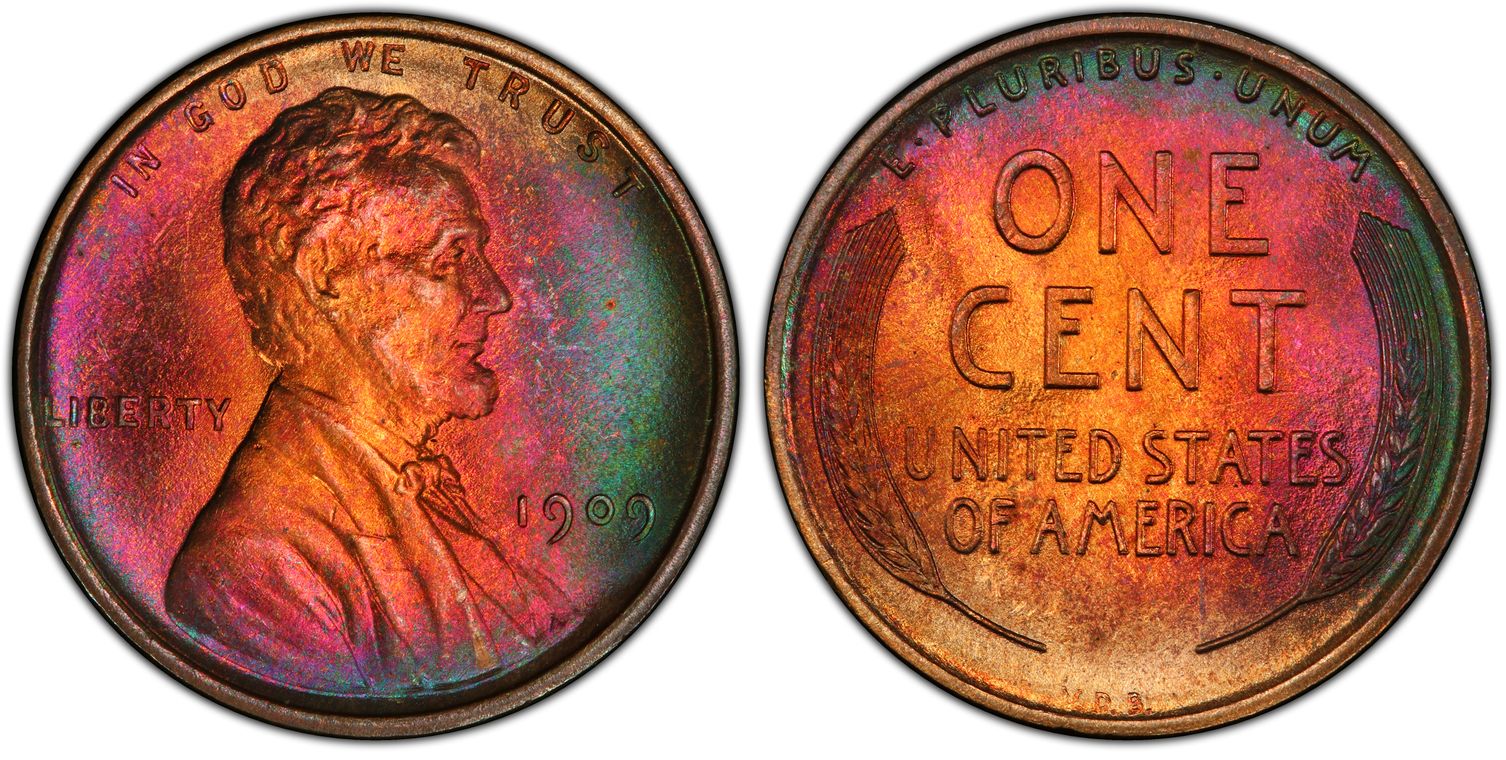
BROWN (BN):
PCGS designates copper coins as Brown when they display less than 5% of their original mint red color. While various factors influence the desirability of copper coins, many collectors prefer Red specimens due to their typically better condition and higher market value. Brown coins generally have a lower value.
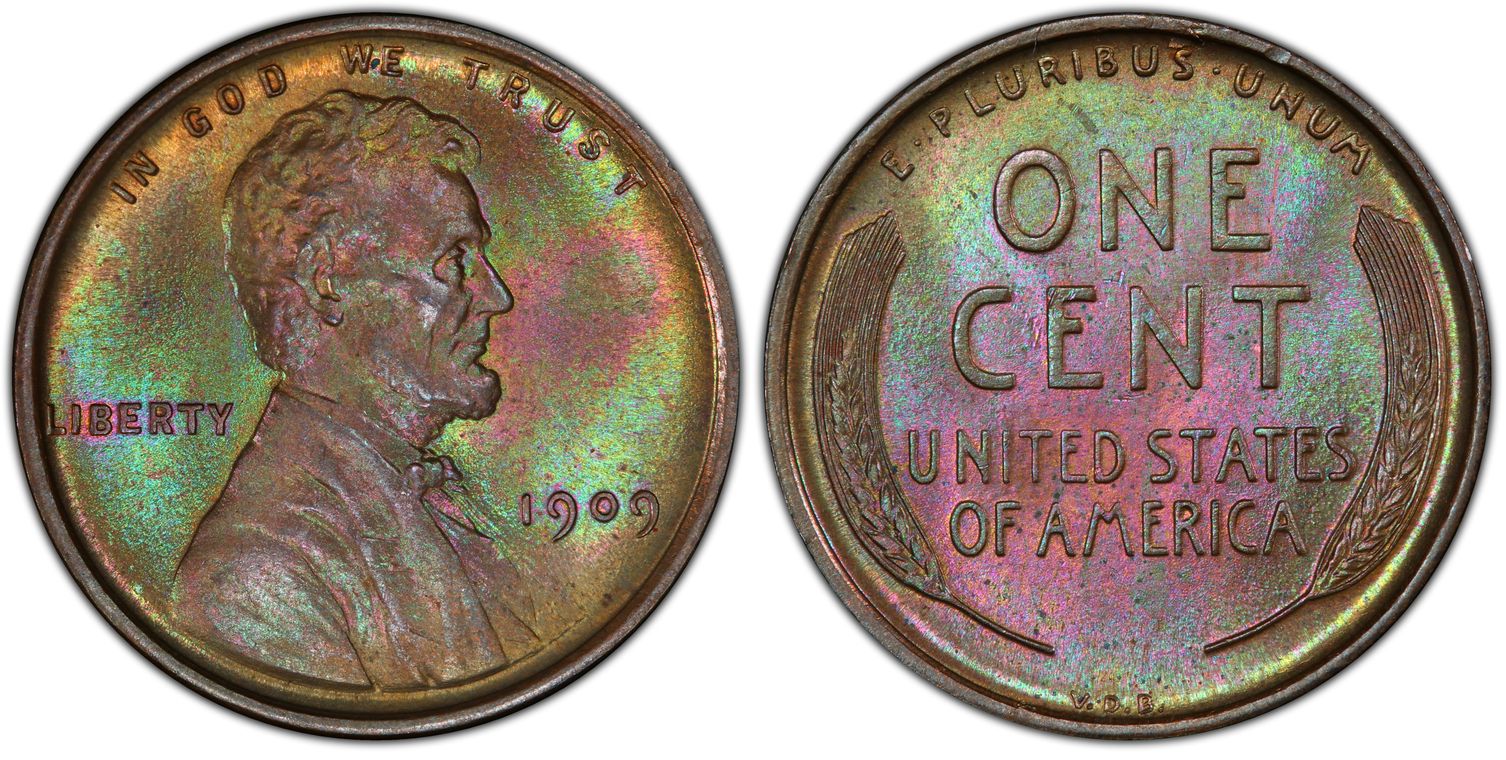
Understanding the distinct colors of copper coins helps safeguard against counterfeit coins, as each condition typically presents a specific tone that collectors can anticipate.
Now that you know the main aspects influencing a 1909 VDB penny's value, let's examine the varieties of this coin and its prices.
Regular issues of the VDB Lincoln cents
1909 VDB Lincoln Penny, Red (Regular Strike) Philadelphia Mint

Source//PCGS
The Philadelphia Mint had a mintage of 27,995,000, but in Superb Gem, uncirculated MS68 is the highest grade; there are only eight individuals. In this grade, they can be worth around 60,000.
In 2021, the record price for a red super gem coin graded MS68 reached $56,400. Conversely, a specimen graded MS62 in brown condition fetched $4,830 in 2002 at Heritage Auctions.
1909-S VDB Lincoln Penny, Brown (Regular Strike) San Francisco Mint
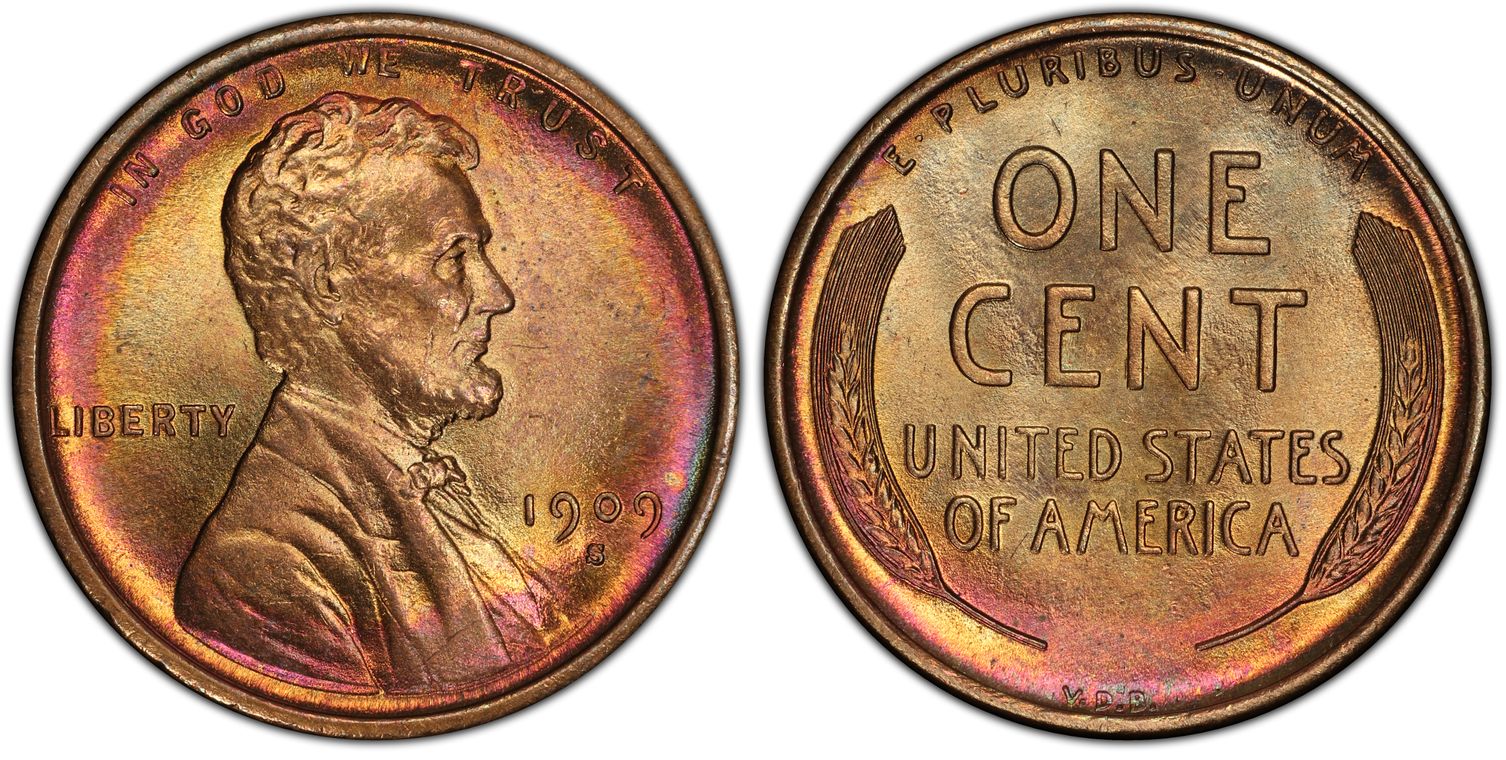
Source//PCGS
Notice the s mint mark below the date, indicating San Francisco Mint. These are called S VDB Pennies.
With an extremely low mintage for the series, the San Francisco mint only released 484,000 coins, making it highly desirable. That and its unique background make the S VDB pennies extremely popular among the coin-collecting community.
This enduring popularity is reflected in the impressive $168,000 record price for a 1909 s VDB penny set recently by a coin in red condition at Stack's Bowers in 2022. The auction record for its brown counterpart was at eBay when an MS66 BN was sold for $10,000.
1909 VDB Lincoln Penny, Red (Proof coins)
Historically, Mints produce proof coins to verify die quality and showcase a mint's capabilities.
They have meticulously crafted editions with mirror-like surfaces, sharp details, frosted engravings, and distinctive finishes.
Unlike regular circulation coins, they are struck using polished dies and planchets, making them highly collectible.
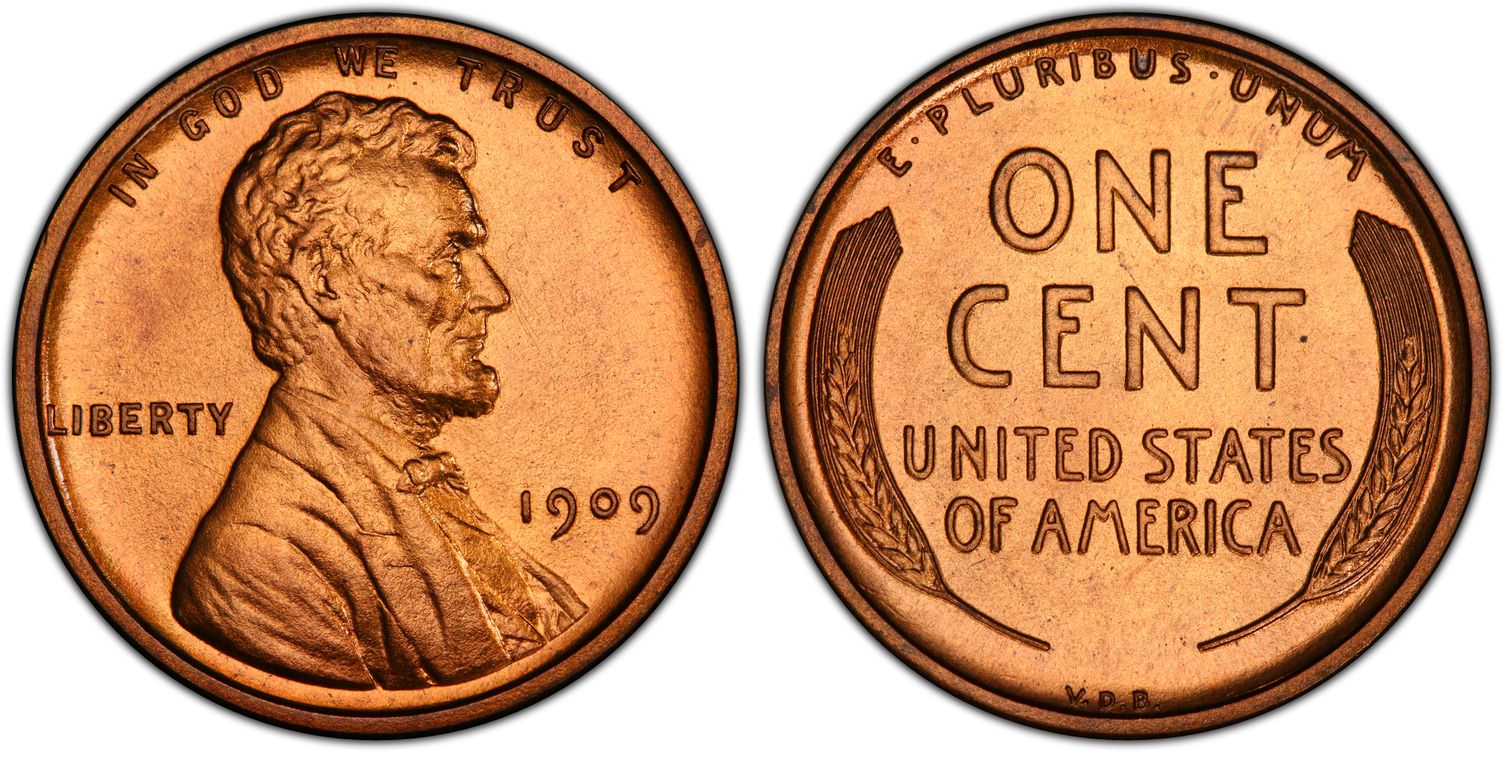
Source//PCGS
With a mintage of 1,194, these proof coins bear the designer's initials just like their regular counterparts. However, they are very scarce in red condition and can be worth up to 380,000 in Superb Gem condition (MS67+).
The record price for a Red-Brown coin was set in 2014 at Heritage Auctions, where a PR67+ specimen sold for $258,500. For red coins, the record stands at $70,500 for a PR66RD in 2019, and for brown coins, it's $41,125 for a PR66BN sold in 2016, both at Legend Rare Coin Auctions.
Rare 1909 VDB Lincoln Penny Error List
The double-die variety is one of this series's most famous error coins (and the only officially recognized at the time of writing). The doubling occurs from mistakes in the die-hubbing process, usually resulting from misalignment.
1909 VDB Lincoln Penny Double Die Obverse FS-1101, Red (Regular Strike)
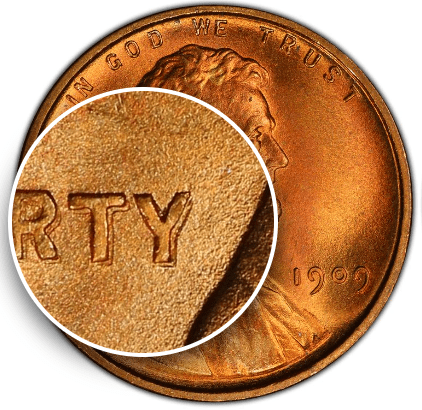
Source//PCGS
This variety, known as Type 1, or FS-1101, is the most prominent and popular of the two doubling error groups. The doubling on Type 1 is strong and easily visible with minimal magnification. The doubling is most noticeable in the letters "RTY" in "Liberty" and the date "1909."
The auction record for this error coin was in 2017 when a red coin graded at 66 was sold for $12,075 at heritage auctions. However, according to the PCGS price guide, a coin in superb gem condition graded as MS67 can be traded for as much as $16,000.
1909 VDB Lincoln Penny Double Die Obverse FS-1102, Red (Regular Strike)
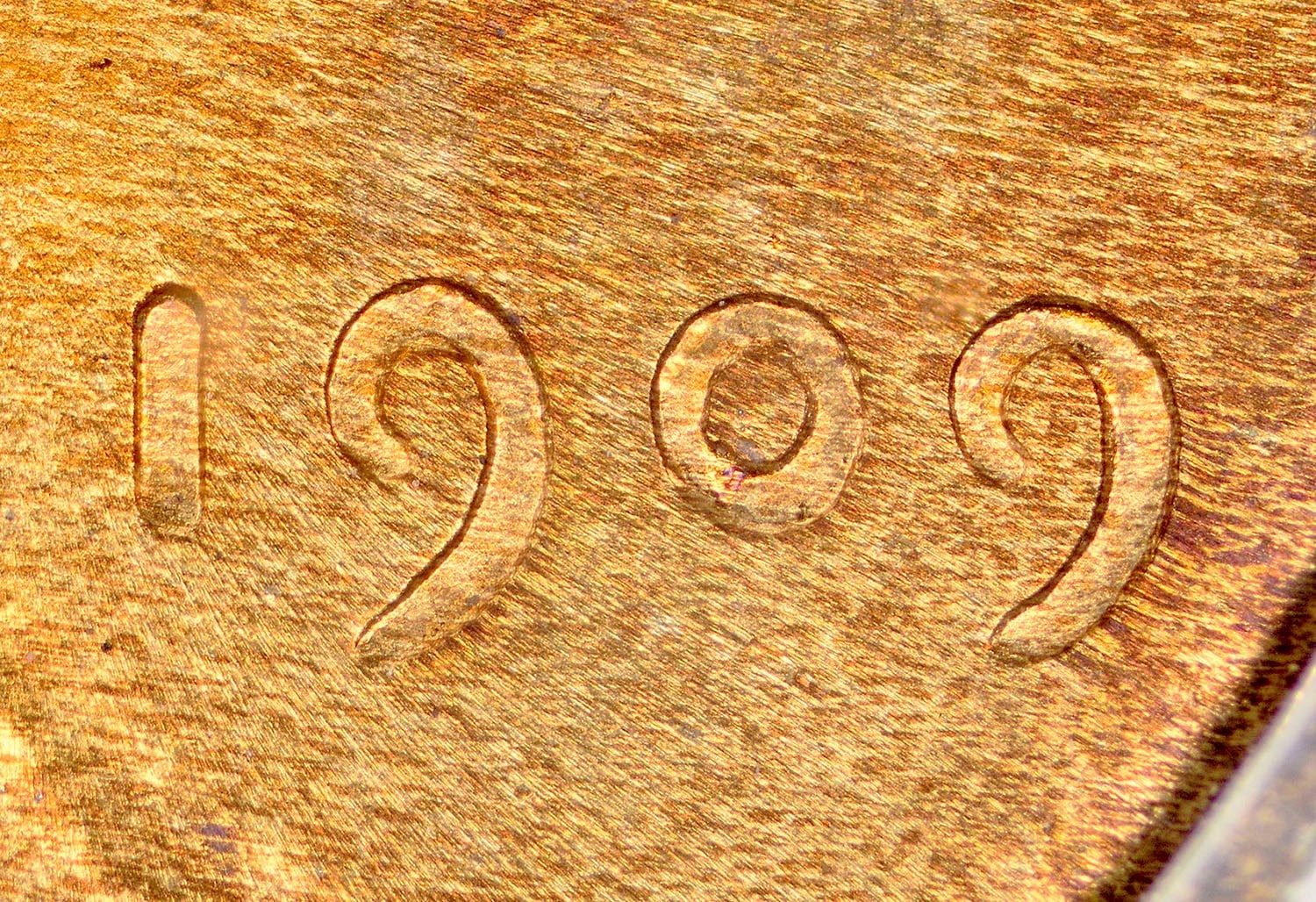
Source//PCGS
According to NCG, doubling in this type 2 is visible as extra thickness to all obverse lettering and the date.
The highest grade for the coin within PCGS records is MS67, worth around $30,000. However, the record price of a coin-graded MS67 was set in 2012 at Heritage Auctions when it was sold for $24,150.
See also our complete list of the most valuable pennies ever sold.
Final Words
In this article, you learned about the key factors that contribute to the value of a 1909 VDB penny. Each aspect contributes to its allure and market value, from its controversial initial design with Victor David Brenner's initials to its various minting varieties and error types.
Notice that while the Lincoln series contains many other errors, this article has focused specifically on the 1909 VDB penny.
Furthermore, we hope this has clarified the topic and inspired you to expand or start your own penny collection. Understanding these nuances can enhance your appreciation for this iconic piece of American coinage and guide your journey in numismatics.




